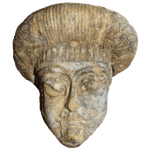About
The ELAMortuary database is the outcome of the project Villages to Empire: 4,000 Years of Death and Society in Elam (4500-525 BCE) carried out by the project researcher, Yasmina Wicks, in the frame of a Marie Skłodowska-Curie Individual Fellowship hosted by Università di Napoli, “L’Orientale” (2022-2024). The project research and database were funded by the European Union’s Horizon 2020 research and innovation programme under the Marie Skłodowska-Curie grant agreement No. 892581 — ELAMortuary.
The ELAMortuary project unites a large sample of burials from Khuzestan province in today’s southwest Iran to investigate social changes spanning four millennia prior to the Achaemenid Persian Empire. Here, as in other parts of the ancient Near East, these millennia witnessed the emergence of urbanisation, writing, religious institutions, states, and long-distance exchange networks. To obtain insights into the local social changes that took place in intricate connection with these developments, ELAMortuary aims to harness the special quality of burials as residues of deliberate depositions imbued with social ideology.
Most burials in the dataset derive from the UNESCO world heritage-listed site of Susa, a large settlement mound rising from the low Susiana plain, which borders on the southern Mesopotamian alluvial plain. The site’s continuous occupation from the late Chalcolithic to the Islamic era presents a rare opportunity to map long-timescale social changes at a single site. From the 1890s until World War II, Susa was targeted for large-scale excavations by the Délégation Archéologique Française en Perse, which recovered swathes of material using rudimentary methods and only summarily documenting the finds. Since burials were amongst the few distinguishable archaeological contexts in the layers of mud architecture and debris, and sometimes preserved rich assemblages, they are well represented in the legacy documentation of the early missions.
Information on the burials was extracted from a combination of published and unpublished sources (see bibliography) and collated and systematized together with better recorded burials from later excavations at Susa and other sites in Khuzestan. Many of the burials were never given unique identification numbers by the archaeologists, necessitating correlations of burials across several sources based only on descriptions. While care has been taken to avoid multiple entries for the same burial, errors cannot be ruled out. It is expected that the database will remain a “living” entity and will be updated as the burials are studied, including revisions of preliminary dates, and more burials and sites are added. Amongst the anticipated additions are around 170 well-documented 2nd millennium BCE burials excavated in the Ville Royale trenches A and B at Susa by Ghirshman’s team and studied by Hermann Gasche (PhD thesis, 2000; publication forthcoming).
Since Susa provides most of the project data, Susa-based archaeological phases are used up to until 2000 BCE and then Elamite dynastic chronologies are used:
- Susa I: 4200-3800 BCE (conventional dates, new evidence from Susa shows an earlier occupation)
- Susa II: 3800-3100 BCE
- Susa III: 3100-2900 BCE (the “Proto-Elamite period”)
- Susa IVA: 2900-2340 BCE
- Susa IVB: 2340-2100 BCE (includes a period of Mesopotamian/Akkadian rule at Susa)
- Susa VA: 2100-2000 BCE (includes a period of Mesopotamian/Ur III rule at Susa)
- Shimashki/Sukkalmah period: 2000-1600/1550 BCE
- Middle Elamite period: 1600/1550-1050 BCE
- Neo-Elamite period: 1050-520 BCE




